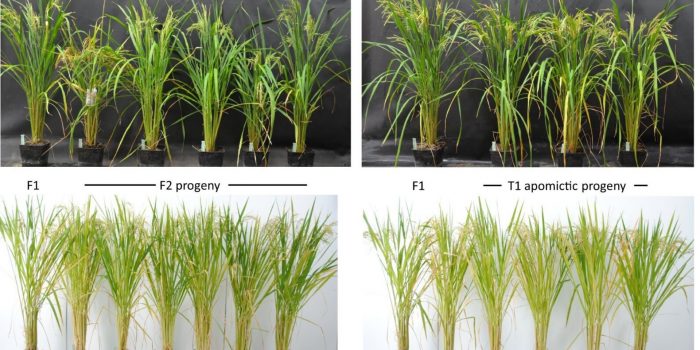An international team has incorporated a commercial hybrid rice strain as a clone from seeds with 95 percent efficiency. This could enable low-income farmers around the world to access high-yielding, disease-resistant rice variants, according to the University of California, Davis.
According to Gurdev Khush, adjunct professor emeritus in the Department of Plant Sciences at UC Davis, this shows that the benefits of rice hybrids are yet to reach most of the world’s farmers.
Khush has made efforts to develop new rice high-yield varieties while working at the International Rice Research Institute from 1967 until his retirement at UC Davis in 2002. For this accomplishment, he was awarded the World Food Prize in 1996.

“Once you have the hybrid, if you can induce apomixis, then you can plant it every year,” Khush said.
Rice breeding success can massively solve the problem of food shortage by feeding a billion phenotypes, panicle fertility, and grain quality of progeny plants of selected apomictic events harboring the T314 and T315 T-DNA constructs. Aurore Vernet et al.

“Apomixis in crop plants has been the target of worldwide research for over 30 years because it can make hybrid seed production can become accessible to everyone,” Sundaresan said. “The resulting increase in yields can help meet the global needs of an increasing population without having to increase the use of land, water, and fertilizers to unsustainable levels.”
According to Sundaresan, the findings might be extended to other food crops. In particular, rice serves as a genetic template for other cereal crops like maize and wheat, which together make up important global food staples.
The study was published in Nature on December 27.


